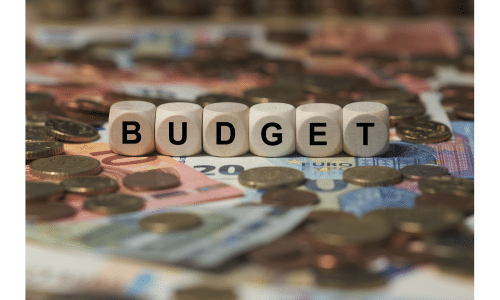10 Proven Budgeting Strategies to Take Control of Your Finances

Are you tired of living paycheck to paycheck and feeling like your money is slipping through your fingers?
It’s time to take control of your finances and start budgeting like a pro. In this article, we will explore 10 proven budgeting strategies that will help you regain control of your money and achieve your financial goals. Whether you’re looking to save for a dream vacation, pay off debt, or build an emergency fund, these strategies will provide you with the tools and techniques you need to succeed. From tracking your expenses and creating a realistic budget to finding creative ways to save and cut back on unnecessary expenses, we’ve got you covered. So buckle up and get ready to transform your financial situation with these tried-and-true budgeting strategies. It’s time to take charge of your money and pave the way for a brighter financial future.
The Importance of Budgeting
Budgeting is the foundation of financial success. It allows you to take control of your money, understand where it’s going, and make informed decisions about how to allocate it. By creating a budget, you can prioritize your spending, save for the future, and avoid unnecessary debt. Budgeting also helps you identify areas where you can cut back on expenses and find opportunities to save. Without a budget, your finances can easily spiral out of control, leaving you stressed and unable to achieve your financial goals. So, if you’re ready to take control of your finances, it’s time to start budgeting.
Benefits of Budgeting
Budgeting offers a wide range of benefits that can positively impact your financial well-being. Firstly, it helps you gain a clear understanding of your financial situation. By tracking your income and expenses, you can identify areas where you’re overspending or not allocating enough money. This awareness allows you to make necessary adjustments and ensure that your money is being used in the most efficient way possible. Budgeting also helps you save for the future. By setting aside money for emergencies or long-term goals, you can build financial security and avoid unnecessary debt. Additionally, budgeting can reduce stress and improve your overall well-being. When you have a plan in place and know exactly where your money is going, you can feel more in control and confident about your financial future.
Common Budgeting Mistakes to Avoid
Before we dive into proven budgeting strategies, it’s important to be aware of some common mistakes that people make when budgeting. One common mistake is not tracking expenses accurately. It’s essential to track every single expense, no matter how small, to get an accurate picture of your spending habits. Another mistake is setting unrealistic goals. While it’s important to aim high, setting goals that are too ambitious can lead to frustration and disappointment. It’s better to set smaller, more achievable goals and build on them over time. Lastly, many people fail to review and adjust their budget regularly. Your financial situation and goals may change over time, so it’s crucial to regularly assess and update your budget to ensure it remains effective. Now that we’ve covered these common mistakes, let’s dive into the 10 proven budgeting strategies that will help you take control of your finances.
Budgeting Strategy #1: Track Your Expenses
One of the first steps in creating a successful budget is to track your expenses. This means recording every single expense, big or small, for a set period of time. By doing this, you can gain a clear understanding of where your money is going and identify areas where you can cut back. There are several ways to track your expenses, from using a spreadsheet or a budgeting app to simply keeping a notebook and pen handy. Choose a method that works best for you and make it a habit to record your expenses daily. Remember, every dollar counts, so be diligent in tracking even the smallest purchases. By tracking your expenses, you’ll be able to identify any unnecessary spending habits and make adjustments accordingly.
Budgeting Strategy #2: Set Financial Goals
Setting clear financial goals is essential for effective budgeting. Without goals, it’s challenging to stay motivated and focused on improving your financial situation. Start by identifying your short- and long-term financial goals. Short-term goals could include paying off credit card debt or saving for a vacation, while long-term goals could include buying a house or retiring early. Once you’ve established your goals, break them down into smaller, more manageable targets. This will make them less overwhelming and easier to achieve. Remember to be specific with your goals and set a timeline for achieving them. By having clear goals in mind, you’ll have a stronger sense of purpose and direction when it comes to budgeting.

Budgeting Strategy #3: Create a Realistic Budget
Creating a budget is at the core of effective financial management. A budget is a detailed plan that outlines your expected income and expenses for a specific period of time, typically monthly. To create a budget, start by listing all your sources of income, including your salary, side hustles, and any other sources of income you may have. Next, list all your expenses, including fixed expenses like rent or mortgage payments, utilities, and insurance, as well as variable expenses like groceries, transportation, and entertainment. Be as thorough as possible when listing your expenses, and don’t forget to include any debt payments you may have. Once you’ve listed all your income and expenses, subtract your total expenses from your total income to determine whether you have a surplus or a deficit. If you have a surplus, consider allocating the extra money towards savings or debt repayment. If you have a deficit, it’s time to look for areas where you can cut back on expenses or find ways to increase your income. Remember, your budget should be realistic and align with your financial goals. It’s okay to make adjustments as needed, but try to stick to your budget as closely as possible.
Budgeting Strategy #4: Prioritize Your Spending
When creating your budget, it’s important to prioritize your spending based on your financial goals and values. Start by categorizing your expenses into needs and wants. Needs are essential expenses that are necessary for basic living, such as housing, food, and transportation. Wants, on the other hand, are non-essential expenses that are nice to have but not crucial for survival, such as dining out or buying new clothes. When prioritizing your spending, allocate a larger portion of your budget towards needs and a smaller portion towards wants. This will ensure that your essential expenses are covered while still allowing for some discretionary spending. By prioritizing your spending, you’ll be able to make conscious choices about where your money goes and avoid overspending on unnecessary items.
Budgeting Strategy #5: Cut Unnecessary Expenses
To free up more money for savings or debt repayment, it’s important to identify and cut back on unnecessary expenses. Start by reviewing your budget and identifying any expenses that can be eliminated or reduced. This could include cutting back on eating out, canceling unused subscriptions or memberships, or finding cheaper alternatives for everyday items. Look for creative ways to save, such as comparison shopping, buying in bulk, or using coupons. You’d be surprised at how much money you can save by making small changes to your spending habits. Remember, every dollar saved adds up over time and can have a significant impact on your financial situation.
Budgeting Strategy #6: Automate Your Savings
Saving money can be challenging, especially when you have competing financial obligations. One way to make saving easier is to automate your savings. Set up automatic transfers from your checking account to a separate savings account on a regular basis. This way, you won’t have to rely on willpower to save money. It will happen automatically, and you’ll be less tempted to spend the money. Start by setting a realistic savings goal and determining how much you can comfortably save each month. Then, set up the automatic transfer for that amount. By automating your savings, you’ll be able to build your savings effortlessly and make progress towards your financial goals.
Budgeting Strategy #7: Use Cash for Discretionary Spending
While credit and debit cards are convenient, they can also make it easy to overspend. To avoid this, consider using cash for discretionary spending. Set aside a specific amount of cash each week or month for discretionary expenses like dining out, entertainment, or shopping. Once the cash is gone, you won’t be able to spend any more in that category until the next allocation. By using cash, you’ll have a physical reminder of how much you’re spending, and it can help you stick to your budget more effectively. Additionally, using cash can also help you negotiate better deals, as you’ll have the advantage of paying in cash.
Budgeting Strategy #8: Review and Adjust Your Budget Regularly
As mentioned earlier, it’s crucial to review and adjust your budget regularly. Your financial situation and goals may change over time, so it’s important to ensure that your budget remains effective. Set aside time each month to review your budget and assess your progress towards your goals. Look for any areas where you may have overspent or areas where you could have saved more. Make adjustments as necessary and update your budget accordingly. This regular check-in will help you stay on track and ensure that your budget continues to align with your financial goals.
Budgeting Strategy #9: Utilize Budgeting Tools and Apps
In today’s digital age, there are countless budgeting tools and apps available to help you manage your finances more effectively. These tools can simplify the budgeting process and provide valuable insights into your spending habits. Some popular budgeting tools and apps include Mint, YNAB (You Need a Budget), and Personal Capital. These platforms allow you to link your accounts, track your expenses, set financial goals, and get personalized recommendations for improving your financial situation. Explore different options and find a budgeting tool or app that suits your needs and preferences. By utilizing these tools, you’ll have a wealth of information at your fingertips and be better equipped to make informed financial decisions.
Budgeting Strategy #10: Seek Professional Financial Advice
If you’re struggling with your finances or have complex financial goals, it may be beneficial to seek professional financial advice. A financial advisor can provide personalized guidance and help you create a tailored budgeting plan that aligns with your goals. They can also provide insights into investment opportunities, tax planning, and retirement planning. While hiring a financial advisor may come with a cost, their expertise and guidance can be invaluable in helping you achieve your financial goals. Before hiring a financial advisor, do your research, ask for recommendations, and ensure they are certified and experienced in the areas you need assistance with.
Conclusion
Taking control of your finances and achieving your financial goals is within your reach. By implementing these 10 proven budgeting strategies, you’ll be well on your way to financial success. Remember, budgeting is not a one-time task but an ongoing process. It requires discipline, consistency, and adaptability. Be patient with yourself as you navigate the ups and downs of budgeting, and don’t be afraid to make adjustments along the way. With time and persistence, you’ll develop healthy financial habits and create a brighter financial future for yourself. So, what are you waiting for? Start implementing these budgeting strategies today and take charge of your money. Your financial goals are waiting for you!



